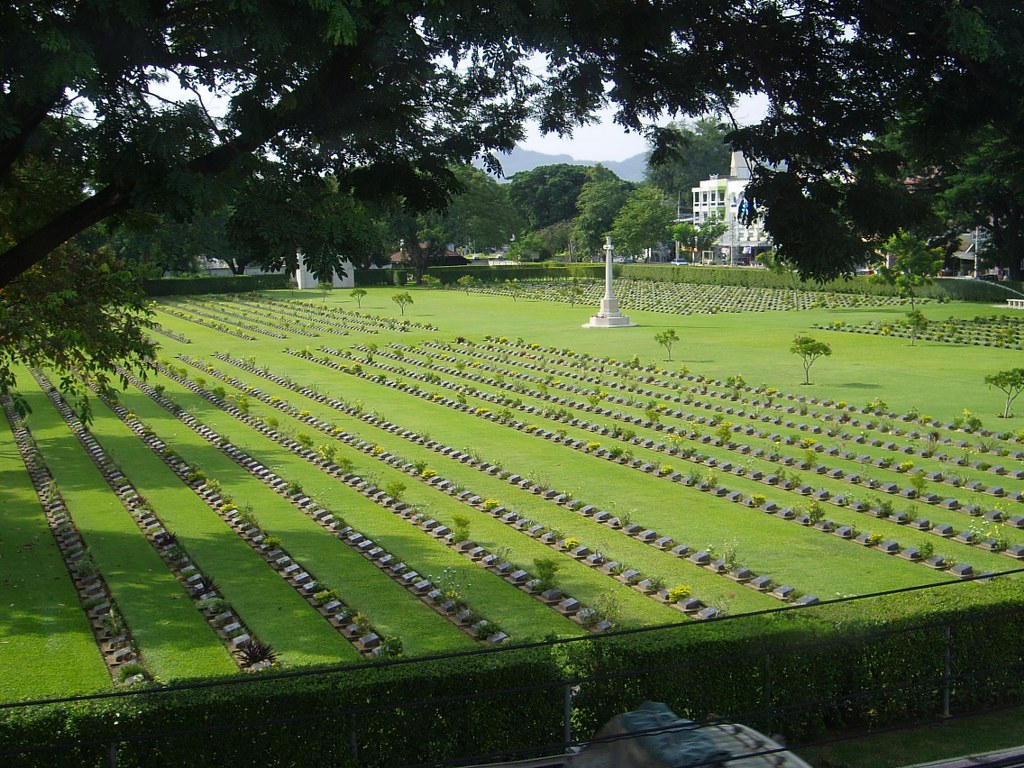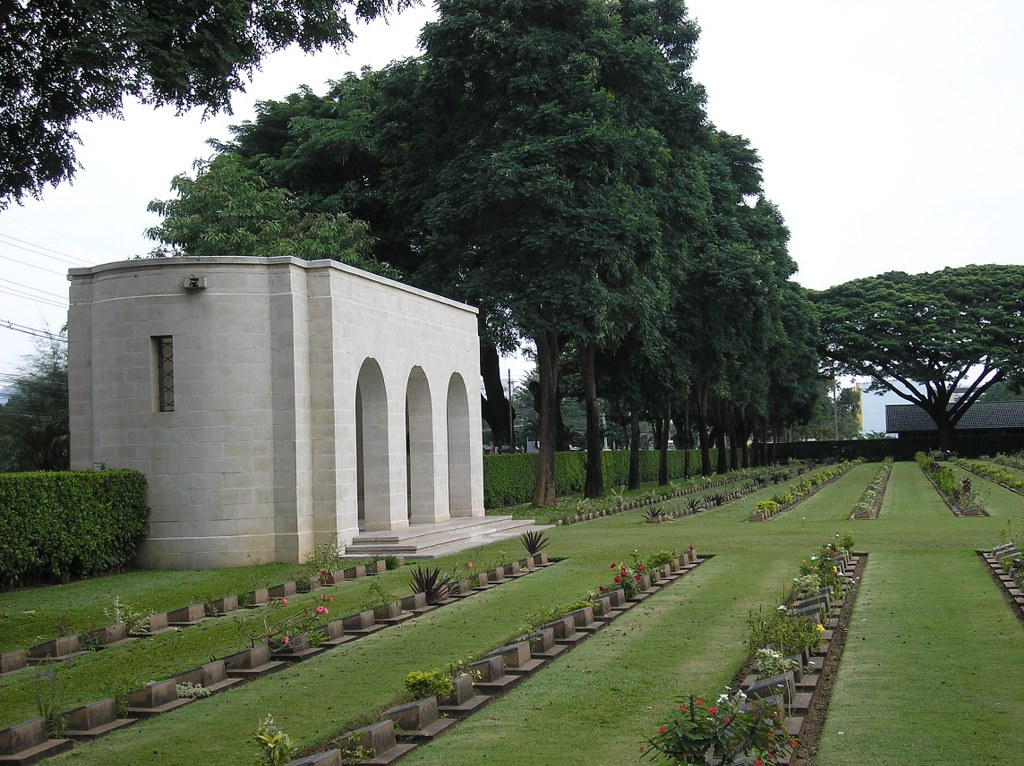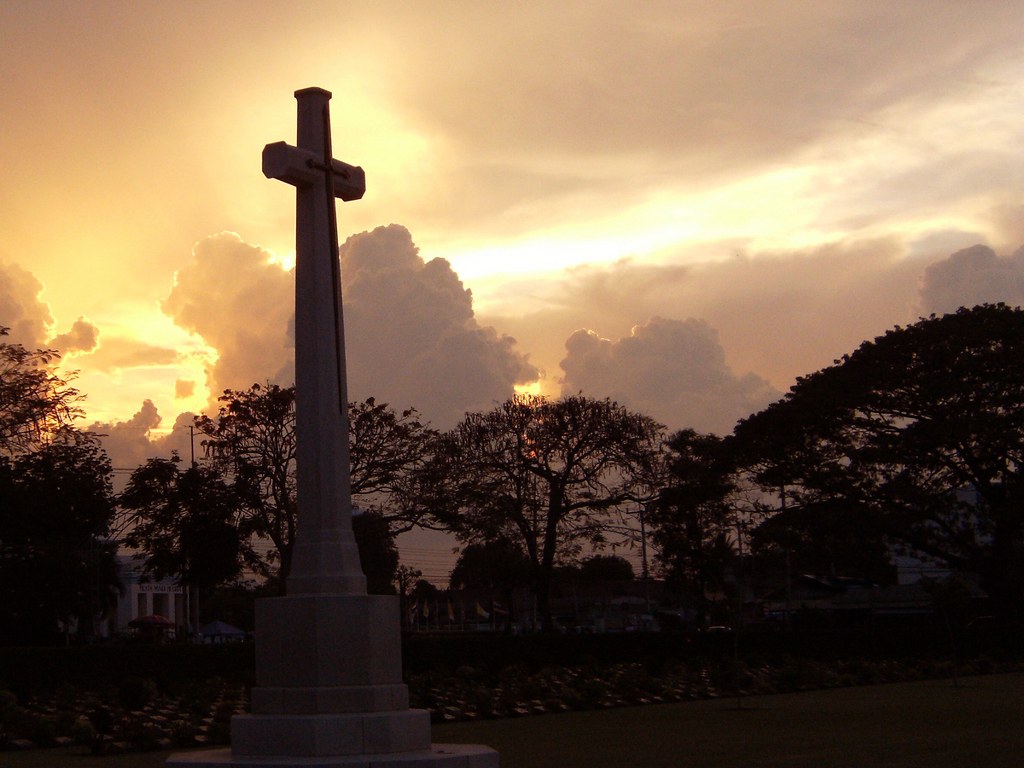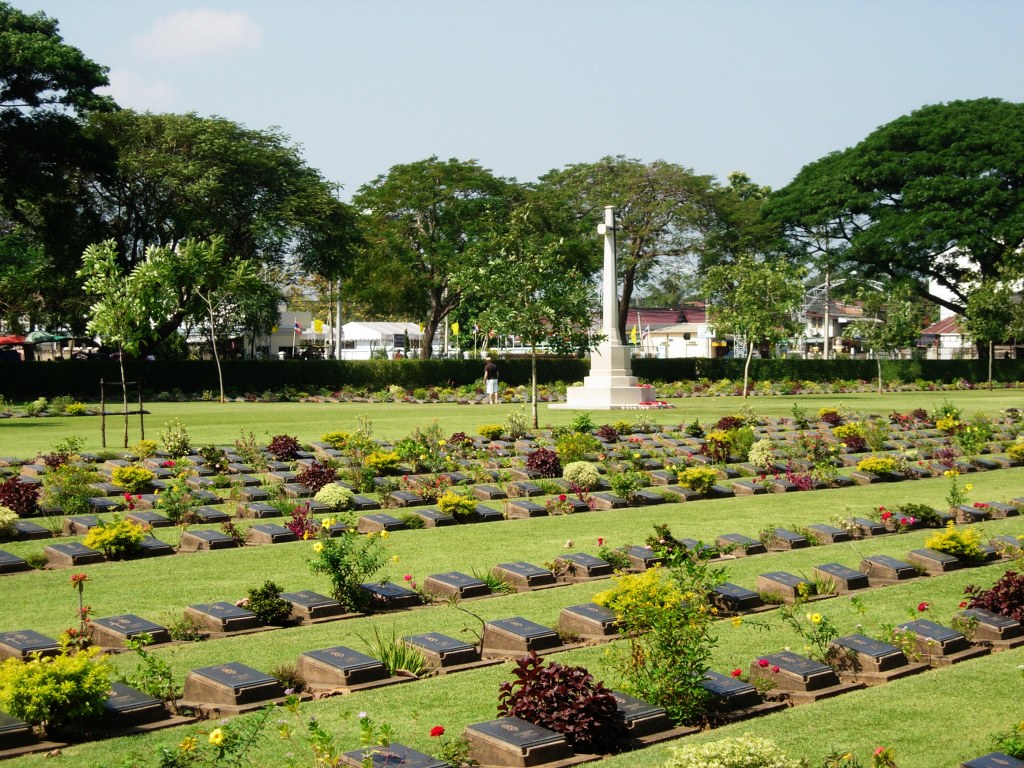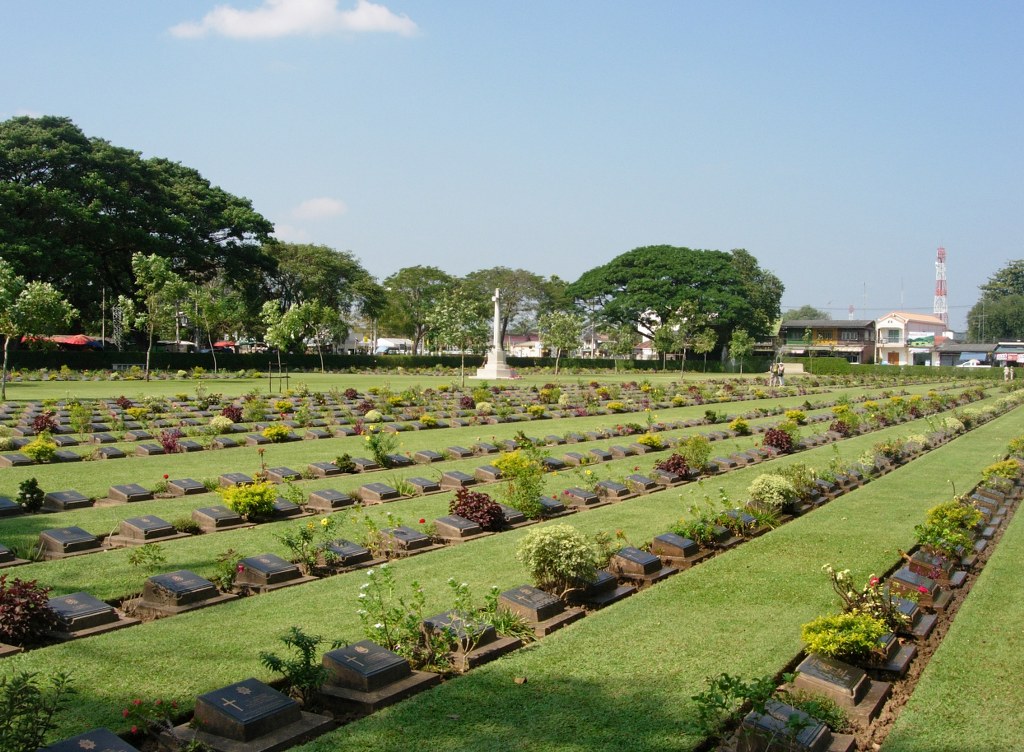Kanchanaburi War Cemetery
- Country Thailand
- Total identified casualties 6858 Find these casualties
- Identified casualties from Second World War
- GPS Coordinates Latitude: 14.03195, Longitude: 99.52582
Please note
Please be aware that there may be snakes in the Cemetery.
PLEASE NOTE
The municipal pavement in front of Kanchanaburi War Cemetery is extremely uneven and a trip hazard. Please take care when visiting.
Kanchanaburi War Cemetery
It is a combination of horticultural care, structural upkeep and general site management that ensures the Kanchanaburi War Cemetery remains a respectful, well-kept place of remembrance. Lawn care takes centre stage, with regular mowing, precise edging and periodic aeration keeping the grass in prime condition.

Equally important are weeding and pruning, where unwanted growth is removed and shrubs, trees and hedges are carefully shaped to preserve a neat appearance. Attention to the flower beds follows, with seasonal plants being planted, watered and dead-headed so they remain healthy and perfectly arranged throughout the year.
Finally, thoughtful irrigation and watering practices, especially during the drier months, allow the team to manage water use efficiently while safeguarding every living element of the grounds.

One of the team's best inventions is a custom-made hoe head designed specifically for mulch application. It was made to measure by a local mechanic to fit the narrow gap between the pedestal and the turf. The bamboo handles were crafted and cut to size by our team, tailored to suit each individual gardener.
Our team adopts a well-planned yet adaptive approach to keep the cemetery in pristine condition, even when the weather is uncooperative. By routinely testing the soil and applying targeted fertilisers, we safeguard plant health and help every species thrive despite environmental challenges.

Sustainable practices are woven into our daily routines: composting and mulching enrich the earth naturally, while carefully calibrated irrigation systems sustain the greenery without wasting precious resources. Above all, decades of collective experience enable us to fine-tune techniques as the seasons shift, preserving the cemetery’s beauty and ensuring its longevity for generations to come.
At Kanchanaburi War Cemetery we employ modern, low-emission tools, ranging from fuel-powered and battery-operated leaf blowers to precision hedge trimmers and mowers, to deliver immaculate results while keeping noise and exhaust to a minimum. In line with our sustainability commitments, we have recently reduced water use dramatically by directing irrigation towards key plantings rather than the turf; as a result, the grass has browned noticeably, a temporary compromise that safeguards precious resources.

Guided by a carefully structured yet flexible maintenance programme, our team continually refines its techniques so that every task upholds the cemetery’s ethos of respect and environmental responsibility.
Location information
The town of Kanchanaburi is 129 kilometres North-West of Bangkok and is best reached by road, along the National Highway which runs north from the capital. There are bus and train services from Bangkok.
Kanchanaburi War Cemetery is situated adjacent to Saeng Chuto Road which is the main road through the town. When approaching from Bangkok, the cemetery is on the left side of the road, towards the far (northern) end of the town.
A Commission signpost faces the cemetery on the opposite side of the road.
Visiting information
ARRIVAL
The route to the cemetery is signposted and the cemetery is located at the side of Saeng Chuto Road, the main road through the town.
PARKING
There is a large car park at the cemetery with space for vehicles, the car park is firm and level. There is also on street parking nearby.
MAIN ENTRANCE ACCESS & LAYOUT
The main entrance to the cemetery is marked by a large, stone, triple arched memorial entrance building with two steps into building. Inside are stone benches.
There are bronze memorial panels inside the entrance building.
In front of the entrance building are two information signs.
The cemetery is a large rectangular shape, at the furthest point from the main entrance is the Cross of Sacrifice; behind it is a seating area with a stone bench. The cemetery is generally level and turfed throughout.
On the far-right side of the cemetery is the Stone of Remembrance. To the far-left side of the cemetery is a memorial shelter, which contains a stone bench. In this part of the cemetery there is a second seating area with a stone bench.
A register book is held at the site office for Kanchanaburi War Cemetery.
ALTERNATIVE ACCESS
It is possible to access the cemetery through the service entrance, next to the office building, where there are no steps.
ADDITIONAL INFORMATION
Opening times for the cemetery are as follows:
0800 hrs – 1700 hrs Monday to Friday
0800 hrs – 1200 hrs Saturday.
Please be aware that there may be snakes in the cemetery.
History information
The notorious Burma-Siam railway, built by Commonwealth, Dutch and American prisoners of war, was a Japanese project driven by the need for improved communications to support the large Japanese army in Burma. During its construction, approximately 13,000 prisoners of war died and were buried along the railway. An estimated 80,000 to 100,000 civilians also died in the course of the project, chiefly forced labour brought from Malaya and the Dutch East Indies, or conscripted in Siam (Thailand) and Burma (Myanmar).
Two labour forces, one based in Siam and the other in Burma worked from opposite ends of the line towards the centre. The Japanese aimed at completing the railway in 14 months and work began in June 1942. The two sections of the line finally met near Konkoita towards the end of October 1943 and the completed line, 424 kilometres long, was operational by December 1943.
The graves of those who died during the construction and maintenance of the Burma-Siam railway (except for the Americans, whose remains were repatriated) were transferred from camp burial grounds and isolated sites along the railway into three cemeteries at Chungkai and Kanchanaburi in Thailand and Thanbyuzayat in Myanmar.
KANCHANABURI WAR CEMETERY is only a short distance from the site of the former 'Kanburi', the prisoner of war base camp through which most of the prisoners passed on their way to other camps. It was created by the Army Graves Service who transferred to it all graves along the southern section of railway, from Bangkok to Nieke.
Some 300 men who died (most from a Cholera epidemic in May/June 1943) at Nieke camp were cremated and their ashes now lie in two graves in the cemetery. The names of these men are inscribed on panels in the shelter pavilion.
There are now 5,085 Commonwealth casualties of the Second World War buried or commemorated in this cemetery. There are also 1,896 Dutch war graves and 1 non-war grave.
Within the entrance building to the cemetery will be found the KANCHANABURI MEMORIAL, recording the names of 11 men of the army of undivided India buried in Muslim cemeteries in Thailand, where their graves could not be maintained.
The cemetery was designed by Colin St Clair Oakes.


